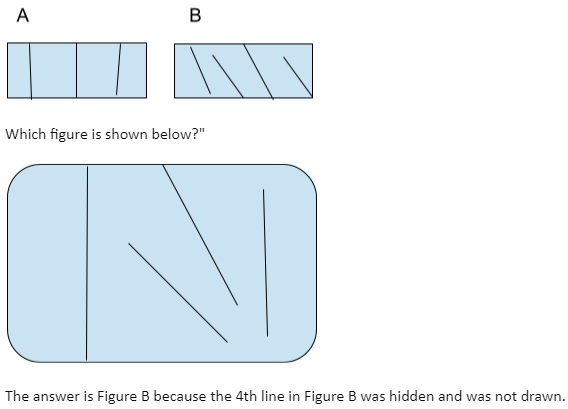Non-verbal reasoning, also known as NVR, is a type of reasoning that does not involve language.
Non-verbal reasoning is complex and can be divided into two parts: figural and abstract. Figural non-verbal reasoning deals with problems such as visual puzzles and tessellations. Abstract non-verbal reasoning involves understanding shapes in the absence of any other cues.
A person’s ability to comprehend figural and abstract non-verbal reasoning may differ based on their culture and upbringing.
Figurative Non-Verbal Reasoning (NVR) can be best defined as the ability to solve or interpret visual puzzles or graphical representations without the use of language or math. It is often looked at as a subset of artificial intelligence because it has to do with understanding geometric
Completion of Figures
Figure reasoning is one of the subjects which are mostly ignored in the syllabus. It includes inference, visualization and spatial understanding.
The completion of a figure is a process where there is an unfinished or incomplete drawing with missing parts.
This test checks different cognitive skills like attention, observational skills, perception and imagination.
There are a lot of concepts like spatial awareness, spatial orientation, visualization and mental imagery which will be tested in this section.
The completion of the figure non-verbal reasoning test requires the candidates to use their power of observation and their analytical skills to solve problems which include finding missing geometrical shapes from incomplete or drawn pictures by drawing a line around the space inside the picture up to its intersection with all continuous lines that form it.
Figures are made up of geometric shapes that can be used to solve various types of reasoning problems.
For example, one type of question is “Figure A has three lines, and Figure B has four lines.

Figure non-verbal reasoning
Figure non-verbal reasoning is a type of reasoning in which the information being presented is in the form of drawings rather than words. The completion of figure non-verbal reasoning may be different depending on the complexity of the tasks and what types of skills are being tested.
The completion of figure non-verbal reasoning involves individual interpreting and completing a drawing that was created by someone else. When we complete these drawings, we will use our past experiences and prior knowledge to think about what we see.
Figure Non-Verbal Reasoning tasks require the examinees to use their deductive and inductive reasoning skills to solve a series of problems.
The measure of figure non-verbal reasoning is the number of minutes it takes for the examinee to complete a total of 24 items in 6 timed blocks. The examinee is permitted 90 seconds per item but may take more time if needed. The level of difficulty increases as the test progresses from items on topics such as diagrams, shapes, and objects to word problems that require reasoning skills.
Students may work through any or all questions in any order they choose, but must start with question 1 in each block and answer all items in a block before going on to the next one.
In order to complete figure non-verbal reasoning, you need to be able to understand and follow diagrams with varying degrees of complexity and be able to analyze them. So your final answer should present a flowchart that covers all the possible outcomes of the diagram.
Applications of non-verbal reasoning
Non-verbal reasoning is a type of reasoning that does not involve the use of words. It can involve logical or mathematical puzzles, or it may be used as an assessment technique for people who have difficulty with spoken language.
In this section, we will talk about a non-verbal reasoning test called the completion of the figure test. The completion of the figure test is useful in identifying children with learning difficulties such as dyslexia and dysgraphia. It is also used to identify children with autism spectrum disorders due to their inability to visually organize patterns and shapes, which can be confusing in this type of task.
Puzzles reasoning
Figure reasoning is a method of solving puzzles that involve shapes and connecting dots.
Below are some common types of puzzles solved by figure reasoning:
- Completion of figure
- Connecting dots in increasing order
- Connecting dots in decreasing order
- Hidden objects identified by the shape of their outlines
Figure reasoning is typically used in problem-solving. The figure reasoning completion game is a puzzle game that requires players to fill in the missing parts of some of the figures.
Conclusion
In this article, we have discussed an important segment of non-verbal reasoning: the completion of figures. The completion of a figure is a process where there is an unfinished or incomplete drawing with missing parts. There are important tips and tricks discussed in full detail in this article. Students, in order to solve mental ability questions your logic should be crystal clear. Figure completion is very easy to understand, its logic is simple, understand it and practice.
 Profile
Profile Settings
Settings Refer your friends
Refer your friends Sign out
Sign out




